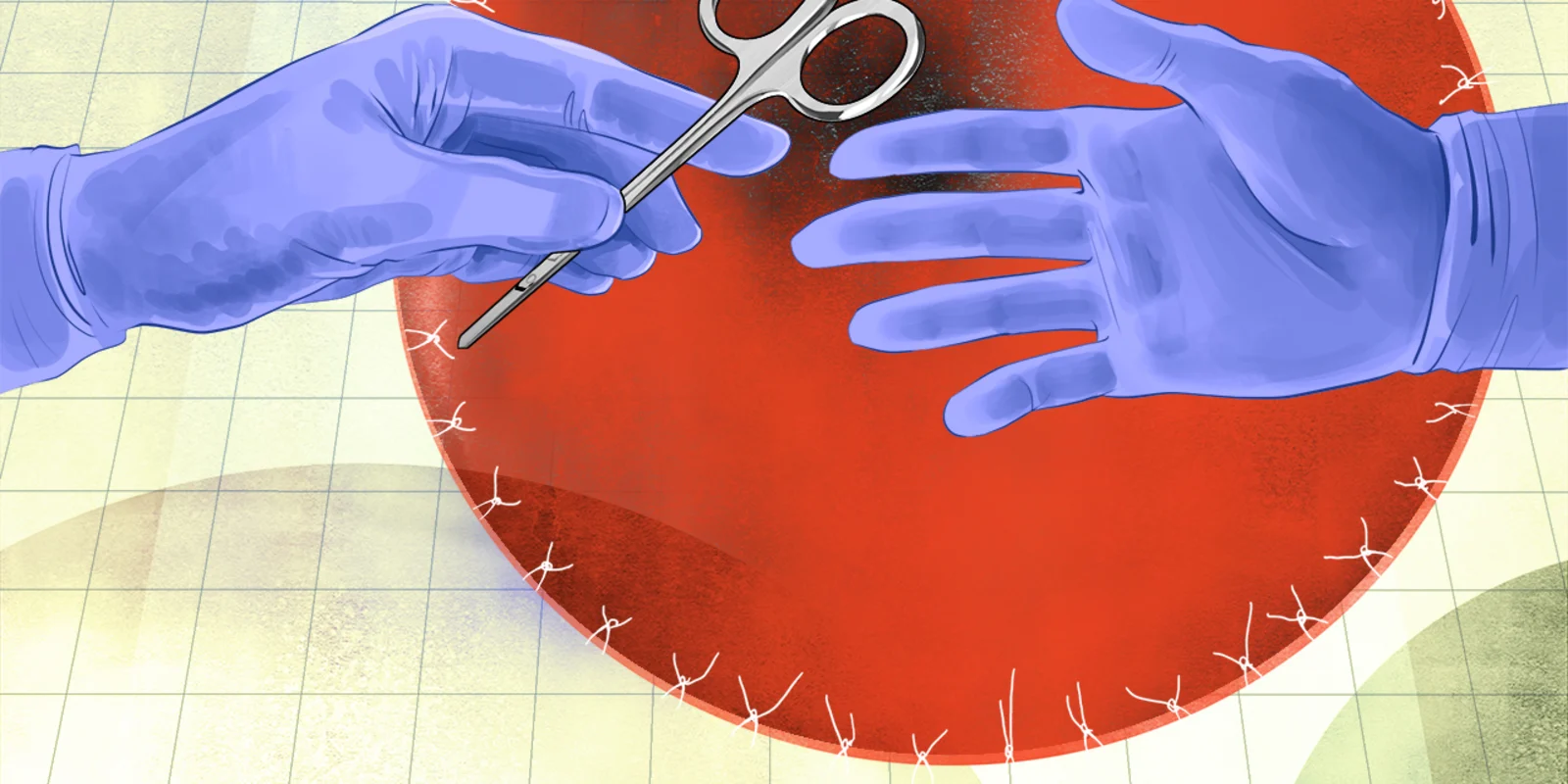 A novice might think they are initiated to the operating room when they change into scrubs or they put on caps and shoe covers, or are taught how to scrub, gown, and glove. They might have a certain giddiness watching the surgical site be exposed, prepped, and draped. As carefully choreographed events occur, there may even be the anticipation of drama unfolding. One is told “stand here” or “rest your hands there.” This is surgical voyeurism, surely more intimate than one might see on television, in movies, or on YouTube — but it’s voyeurism nonetheless.
A novice might think they are initiated to the operating room when they change into scrubs or they put on caps and shoe covers, or are taught how to scrub, gown, and glove. They might have a certain giddiness watching the surgical site be exposed, prepped, and draped. As carefully choreographed events occur, there may even be the anticipation of drama unfolding. One is told “stand here” or “rest your hands there.” This is surgical voyeurism, surely more intimate than one might see on television, in movies, or on YouTube — but it’s voyeurism nonetheless.
Initiation only comes, to paraphrase Theodore Roosevelt, by being the [one] in the arena.
To explain. When I was younger, a surgical trainee, I had the opportunity to assist an older and renowned plastic surgeon during bilateral blepharoplasty. This surgeon was slight of build but mighty of reputation, especially for fastidiousness. It was his technique, after the redundant skin was excised, to close the lid wound with interrupted, precisely-placed fine nylon sutures. My task, seemingly simple enough, was to cut the suture after each stitch was placed. This surgeon was truly expert at placing the stitches evenly and tying down the knots with just the right amount of tension. The row of sutures he placed could have been described as a thing of beauty — except that is, for my cutting. After the first stitch was cut, I heard the surgeon mutter, "Too long." After the second suture was cut, there came a sharper, "Too short." Upon my cutting the third suture, the surgeon emitted a long exasperated wheeze. Every time I cut a suture the surgeon would grunt and growl. His eyes turned into lightning bolts of anger or drifted heavenward pleadingly. My left hand, my dominant hand, so steady at the beginning of the procedure became a noodle. I was increasingly aware each time I swooped in for a cut that I had very pointy, sharp scissors poised a centimeter above the globe of this poor patient's eye. Intention tremor? You betcha!
The surgeon was huffing and puffing so much that at one point the patient, conscious anesthesia only, asked, "What is going on, are you talking to me?"
With a honeyed voice, all the while glaring fiercely at me, the surgeon answered, "No dear, everything is fine. We are just talking amongst ourselves."
And everything was fine. Except for me of course. I had to tamp down a stream of emotions: humiliation, anger, doubt, confusion, shame, rage, and focus. Focus, however timorous, on getting through the procedure. Adding to my distress was the knowledge that I could easily find myself in an OR tomorrow or the next week with all the same people minus only this particular patient.
This case, this particular ignominy (it was painful), taught me something important about myself and about operating rooms, too. First, the operating room environment can turn quickly hostile. Second, I could be pushed to the edge of competence quickly, even when performing a simple task. But, I also learned I had the resilience – grit is a popular term – to function under duress. In years to come, I would be grateful to know that fortitude existed within me. Maybe finding it and testing it is a necessary part of the progression to becoming a surgeon.
The day of the blepharoplasty, the others in the room, the nurses and tech, saw me struggle. After the case was finished, they embraced me emotionally. A typical comment was, "That was a rough case, difficult to watch." Wink. Move on.
There is a certain grace among OR personnel. While the circumstances will differ, everyone that makes a living in the OR, from exalted surgeon to surgical technician, can relate a similar story. Unavoidably, sometimes incomprehensible to all but the surgeon, procedures turn stressful. When you have your first stressful surgical experience, take heart and know that you have been initiated to the operating room, a place where great feats can and do happen. Welcome to the arena.
Dr. Harris is a general and now, acute care, surgeon in a multispecialty group practice with greater than 30 years of experience.
Illustration by April Brust and Jennifer Bogartz







